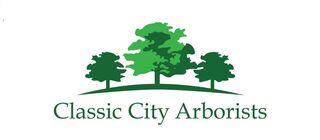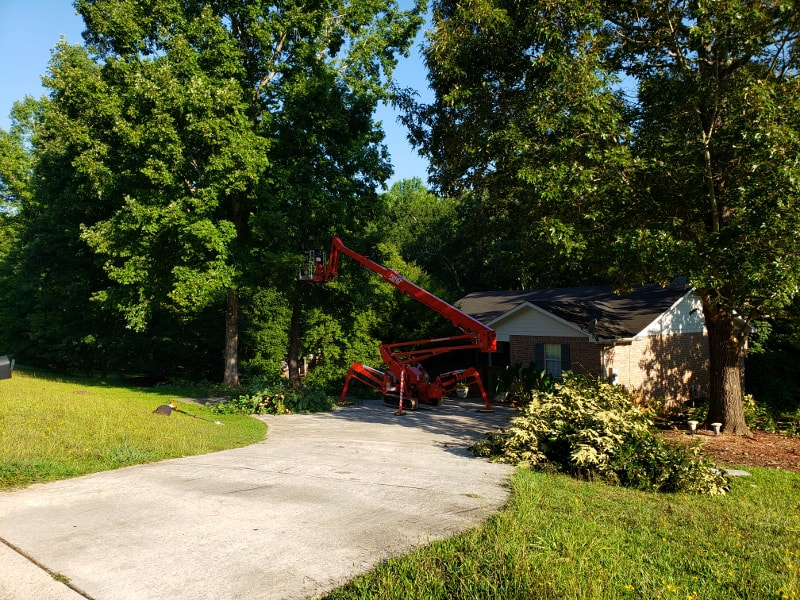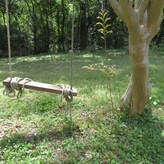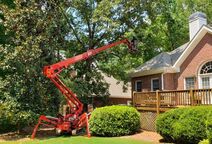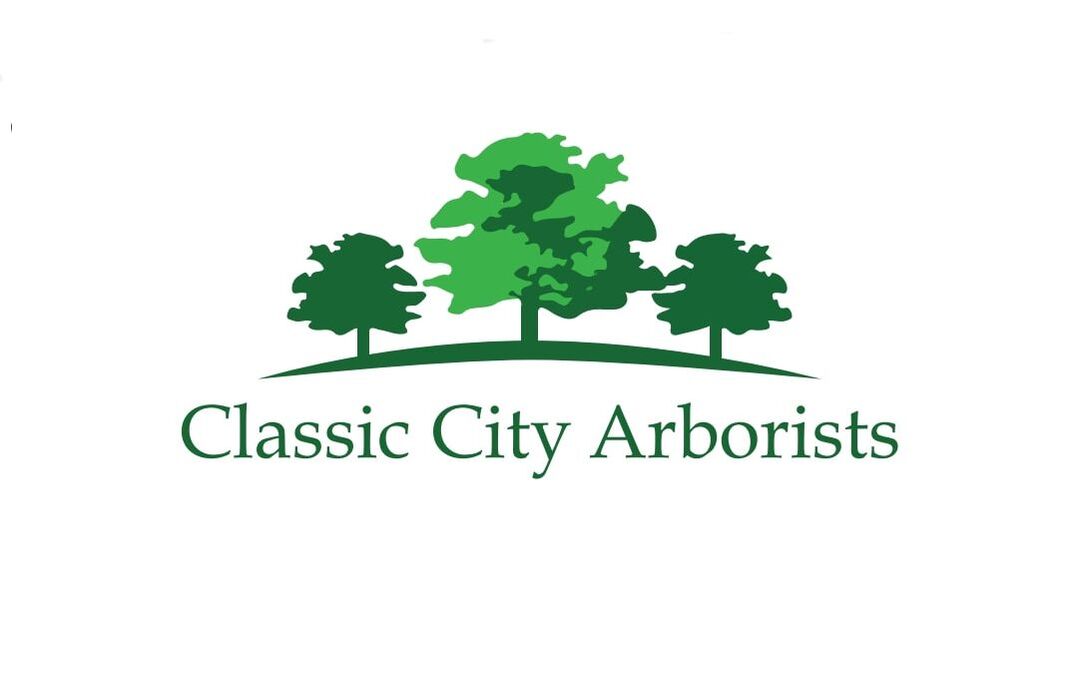|
News and Blog Articles
|
|
Flower gardens are a highly-sought-after addition to any home. A bed of brightly-blooming flowers can enhance curb appeal and provide you with cut flowers at the significantly cheaper cost of cutting them yourself than paying for a bouquet at the grocery store. They also attract beautiful butterflies and singing birds, adding some whimsy and fantasy to your yard. In fact, attracting wildlife like birds, bees, and butterflies is one of the most important functions of any flower; these pollinators and seed-spreaders are vital to the continuation of any plant species, and—in the case of honey bees, specifically—the continuation of the pollinators themselves. Most everyone in the South knows that Milkweed is planted for Monarch butterflies. These insects swarm to the southeast to breed, and Milkweed is vital for Monarch larvae. Though it isn’t perhaps the most attractive plant, Milkweed is a beneficial addition to any landscape But what other plants should you plant to help out the butterflies, or the birds, or the bees? We’ve compiled a list of flora that’s best at attracting our flying friends, so you can add something pretty and ecologically valuable to your yard. Whether you’re looking to fill a small flower bed or your entire yard, if your goal is to attract all kinds of pollinators and seed-spreaders, then these are for you: Bee BalmAs you may have guessed from the rather on-the-nose name Bee Balm is a magnet for bees. Though the attractive perennial may yellow in the heat of summer, rest assured that any established plant will reliably return year after year. Bee Balm also interests butterflies and birds—especially hummingbirds SageMore than just a delicious herb, Sage plants offer gorgeous flowers and are perfect sources of nectar for bees, butterflies, and hummingbirds alike. These perennials are surprisingly easy to grow and maintain, and as an added bonus, give you fresh herbs to add to your favorite dishes! ZinniaZinnias are a beautiful addition to any flower bed, and attract all sorts of songbirds in addition to hummingbirds, butterflies, and bees. They require a bit more maintenance than some of the other options on our list; to continue blooming, they’ll need the heads of any dead blooms trimmed off. But, if you’re willing to spend a little time in the garden tending them, Zinnias will happily provide colorful flowers all summer long Other attractive plants for pollinators and seed-spreaders include Verbena, Thistle, Nasturtium, and Hollyhock. But maybe you’re not interested in attracting just any friends into your yard. Maybe you’d like to avoid the avian seed-spreaders, because they like to wake you up at 6AM singing with the sunrise. Maybe you’d rather not have butterflies, because that means caterpillars, which appear to be tasty snacks to dogs and toddlers alike. Or maybe you’re hoping not to attract bees, because you’ve got kiddos around and aren’t interested in the crocodile tears that come with bee stings (trust us, we’ve been there). If you want to be a bit more specific in what you attract, check out these: Lavender - Good for Butterflies and BeesLavender attracts butterflies and bees thanks to their gentle fragrance and gorgeous purple blooms. In addition to a colorful addition to your yard, lavender comes with a variety of uses and benefits for humans, too. The gentle scent is known for its soothing, relaxing effect, and the dried plant is often used in air-freshener satchels, since its smell isn’t overpowering. Lavender is also a great addition to your herb arsenal, and can be used in a variety of dishes, from sweet pastries to savory entrees Borage – Good for Butterflies and Bees Borage, more commonly known as Starflower, starts out a light pink color and then mature into a wonderful blue. They make great neighbors for tomato plants, and are attractive to butterflies and bees. Borage is an annual plant, which means the same plant won’t come back again next year—but they naturally re-seed, meaning a patch of Borage will likely sprout new plants next year from the seeds of the old ones Liatris – Good for Butterflies and Hummingbirds Liatris comes in purple, pink, and white blooms with grass-like, spiky leaves. They can reach heights of up to 5 feet tall, and require little to no maintenance. They are tolerant of drought, cold snaps, and pests, and will bring in colorful butterflies and flitting hummingbirds alike Phlox – Good for Butterflies and Hummingbirds This flowering plant grows low to the ground and is fairly hardy, making it great ground cover. It attracts butterflies and hummingbirds, and blooms from early spring all the way through summer Geraniums – Good for Hummingbirds and Bees Geraniums are beautiful cluster perennials that will come back every year and attract hummingbirds and bees. They require minimal care, though they do best if blooms are trimmed once dead, to encourage more flowers Other more selectively attractive plants include Scabiosa and Delphinium, good for butterflies and hummingbirds, Four O’Clocks and Paintbrushes, good for hummingbirds and bees, and Cosmos and Goldenrods, good for butterflies and bees. Lastly, we want to point out that you don’t actually have to have a flower garden, or flowering plants in general, to contribute to the pollinators and seed-spreaders. Some trees and shrubs will also get the job done, and require much less maintenance: Oak TreesThese stately trees attract moths and butterflies, which in turn attracts a wide array of bird species. Plus, they’re gorgeous! WillowsWhether it’s the shrub-like Pussy Willow or the grand Weeping Willow, these trees are highly enticing to a variety of birds thanks to their nesting real estate and protective foliage. They also attract their fair share of butterflies and bees, and can bring some height to your yard that might otherwise be filled with shorter flowering plants Cherry TreesBlack Cherries, Common Chokecherries, and other native cherries feed birds, caterpillars, and moths alike, and are a great addition to any landscape. Other tree species great for the birds, the bees, and everything in between include Birches, Dogwoods, Hollies, Elderberries, Mulberries, and Junipers. So there you have it. Any combination of the plants listed above will turn your yard into an oasis of food, pollen, and nesting ground. No matter which you choose to plant, keep in mind that all of our flying friends are most attracted to a diverse range of options—like us, they’re not happy with the same-old-same-old for every meal. A healthy mix of perennials, flowering plants, and trees or shrubs will ensure every single bee, bird, and butterfly has something to snack on, and will help the stability of your local ecosystem! Now, if you’re interested in keeping insects and birds and butterflies away, tune in next week for our article, Ecological Warfare: What to Plant to Discourage Potential Pests. AuthorEmily Casuccio is sister and sister-in-law to Rebekah and Scott Rushing, and has over half a decade of experience in copywriting, copyediting, proofreading, and developmental storyboarding. She's worked with both published and undiscovered authors on both fiction and nonfiction, and takes pride in supporting local businesses. Her passion lies in the written word and helping authors of all capacities realize their dreams and achieve their fullest potential. To learn more about her, read samples of her work, or contact her, visit her online portfolio.
1 Comment
With summer right around the corner, bringing warm sunshine and fun hours spent outdoors, we’ve decided to feature the Nellie R. Stevens holly for May’s Tree of the Month. These broadleaf hollies are often thought of as winter fixtures; their tall, conical shape is highly reminiscent of Christmas trees, and their branches, which grow ruby-red berries in the colder months, make great decorations for the Christmas season. Their dark green leaves also attractively contrast the white of newly-fallen snow. So why are we showcasing the Nellie R. Stevens Holly in the summer? Well, these lovely evergreens actually offer vibrant colors year-round. In the spring, small white flowers bloom across the entire tree, giving off a light, gentle scent and beautifully standing out against their leafy background; the dark green, spiny leaves all but sparkle in the sunlight, only further solidifying the tree’s appearance. Beyond their stunning curb appeal, these hollies offer a variety of benefits when planted in your yard. They grow incredibly wide and tall, easily blocking out the sun from reaching your patio and offering that much-needed shade from the blaze so you can enjoy your sweet tea in peace. When planted in rows, these hollies make perfect privacy screens. With just a few feet between each tree, their branches will quickly grow wide enough to intertwine with each other, creating a barrier between your property and the prying eyes and unwanted noises of the rest of the world. This “living wall” provides some separation and turns your backyard into a quiet, serene oasis where you can enjoy the longer summer days with your friends and family. Nellie R. Stevens Holly 101 Taxonomically classified as Ilex x, the Nellie R. Stevens holly is commonly referred to without the middle initial (just Nellie Stevens holly). They grow quickly in comparison to other native trees in Georgia, adding a solid 2 to 3 feet in height when young. Typically, matured Nellie Stevens will reach widths of around 15 feet and heights of up to 30 feet when left to their own devices; this height is stunted somewhat when multiple hollies are planted close to each other to form a privacy screen, where they will usually top out at between 20 and 25 feet high. Did You Know?The Nellie R. Stevens Holly gets its name from a woman named Nellie Robinson Stevens, who grew the original hybrid plant in her home garden by happenstance after sneaking a few pollinated berries from the U.S. Botanic Garden in Washington, D.C. Bees had cross-pollinated the berries in a chance inter-specific cross between the Chinese holly and English holly, creating an entirely new and unique species. While they make great towering trees, these broad-leaf hollies can also be grown as shrubs, cut lower to the ground and allowed to grow wide instead of tall. Both patterns, shorter and fatter or taller and thinner, make great “living” hedges. Whichever you choose, be sure to plant them at least 5 feet apart, so they have enough room to grow outward! In addition to its quick growth rate, the Nellie Stevens is a pretty low-maintenance plant that has been said to “thrive on neglect.” Though it prefers more acidic soil, it can tolerate basic soil types and varying nutrient levels. They do well in full sun, a helpful feature for Georgia’s long summer days, but are also satisfied in partial shade. For their first 6 months, they’ll need some water about once a week, but once they’ve matured, you’ll only need to water them if there’s an extended dry spell. They can handle brief stints of extreme temperatures, making them ideal for the Peach State, where we are at risk for a “Snowpocalypse” in April and record-high temperatures over 100 degrees in August. Georgia is also at risk for inclement weather with heavy rains and high winds. Thanks to their wider base and solid root system, Nellie Stevens are more structurally stable than their taller, skinnier counterparts, making them a great windbreak for your property and less likely to uproot and cause damage or personal injury. Without pruning and maintenance, these trees will mostly maintain their attractive, conical shape. If desired, the lower branches can be pruned back to expose the trunk, giving them that more stereotypical “tree” shape. They are also resistant to pests and pest damage, including deer, making them especially suited for the Athens and Watkinsville areas, where white-tailed deer are an adorable menace to our plant friends. The only pests to look out for on your Nellie Stevens are spider mites, scale, and whitefly, as well as a rare but highly-specialized leaf miner that feeds specifically on hollies. To learn how to keep your eye out for pest and other damage, read our 5 Simple Signs To Identify If Your Tree Is In Decline article. Did You Know?While the Nellie Stevens holly is always female, it has a selectively bred male counterpart, which allows for successful pollination and therefore the continuation of the species. These male Nellie Stevens hollies are referred to as Edward J. Stevens hollies, named after Mrs. Nellie R. Stevens’ father. Edward Stevens hollies grow more purplish leaves than Nellies, and only reach heights of about 25 feet. The Nellie Stevens Holly has dark green leaves averaging around 2.5 inches in length, with 2 or 3 spines on each side. This foliage stays vibrant all year round, unlike other hedge tree species that can grow brown in drought or over-exposure to the sun. In the spring, the branches are be-speckled with small flowers that highly contrast the shining leaves; they are usually a soft white in color, though sometimes can appear greenish thanks to their green center, and give off a faint, gentle scent. In the colder winter months, these hollies will start producing their bright red berries. The fruit attracts birds and other small wildlife, providing vital food when other plants lay dormant in the cold. They are roughly equivalent in size to that of a pea, and are a large part of why these trees are viewed as winter trees; branches adorned with berry clusters are often clipped and used as Christmas decorations, and sometimes mistaken for mistletoe. All Nellie Stevens hollies are female hybrid plants, which means that they are an exclusively female species. They are considered partially parthenocarpic, which means they can produce their red, round berries without the assistance of a male counterpart (though that fruit is seedless and therefore barren). With no males to speak of, that means you can enjoy the flowers and berries without any sneeze-inducing pollen to irritate your sinuses! If you are looking for a low maintenance privacy barrier that will increase your curb appeal (while reducing the nasty yellow pollen around your yard), then take a second look at the beautiful Nellie R. Stevens Holly! AuthorEmily Casuccio is sister and sister-in-law to Rebekah and Scott Rushing, and has over half a decade of experience in copywriting, copyediting, proofreading, and developmental storyboarding. She's worked with both published and undiscovered authors on both fiction and nonfiction, and takes pride in supporting local businesses. Her passion lies in the written word and helping authors of all capacities realize their dreams and achieve their fullest potential. To learn more about her, read samples of her work, or contact her, visit her online portfolio. When you think of an arborist, or a tree care service, you probably think of just cutting down trees. While tree removal is definitely a large part of what we do, it’s not the only thing; we offer a variety of services, the most popular of which is pruning. Pruning may sound a little anticlimactic, like a service best saved for landscapers and lawn mowers, but pruning in the arboreal world is much, much more than just trimming back some bushes. Pruning a tree is used to help a tree continue to grow healthily, whether we’re thinning out the branches so the canopy doesn’t get overcrowded or cutting away dead limbs to prevent a fall that could result in property damage or injury. Healthy trees are happy trees, and we are in the business of keeping trees happy! Why Would A Tree Need to Be Pruned? There are a wide range of reasons why any given tree could use a good pruning. On the whole, pruning is used to improve the health of a tree and increase its chances of survival. On a smaller scale, pruning can also enhance a tree’s visual appeal to more attractively fit in with your property.
Smaller dead branches, though they may not seem like a big deal (especially if they aren’t an eyesore), still pose a hefty threat to the health of your tree. Once that limb starts decaying, it will turn into a breeding ground for a wide range of fungus, insects, and small animals. These pests can easily spread, causing damage and wreaking havoc on an otherwise perfectly healthy tree.
While dead and dying limbs are a very good reason to prune, sometimes, even healthy limbs could do with some pruning. Here in Georgia, we are prone to a range of inclement weather, from tornado warnings to hail to thunderstorms; with summer right around the corner, heavy summer rain is on its way, and any of these conditions can easily cause a heavy, protruding limb to fall from its tree.
Another reason to prune is to correct improper growth and help guide the tree into a growing pattern that is healthier and more sustainable. Trees can sometimes start growing all sorts of ways, whether it’s off to the left, bent over, or a little twisty, and all of these can cause significant issues for the tree down the road. Sometimes, trees split down the middle and start growing in two directions, in which case it will definitely need either pruning or cabling. In any of these situations, the best course of action is to prune so that the tree can return to a healthier growth pattern and live a long, happy life. Though the best time to prune is often in the fall or winter, when most trees have gone dormant for the cold weather, some trees may benefit from pruning in spring or summer. The Four Main Pruning Techniques When pruning a tree, there are four main methods your friendly neighborhood arborist will use: Cleaning is used to remove dead, dying, diseased, sickly, weakly-attached, or low-vigor branches from the crown of a tree. Thinning involves selective branch removal calculated to improve the tree’s overall structure, increase light penetration for photosynthesis, reduce canopy weight and prevent overcrowding to mitigate the risk of limb failure, and even just to help the tree retain its natural shape. Raising is the removal of the lower branches of a tree to allow for traffic or structures below, such as a shed, a vista, pedestrians on a sidewalk, or even a house. Reduction reduces the overall size of a tree by incorporating all three of the above while maintaining the structural integrity and form of the tree. The Golden Rule of Pruning One of the biggest mistakes anyone can make when pruning a tree is pruning too much. According to the International Society of Arboriculture (ISA), no more than one-quarter of a tree’s crown should be removed at any one time. If you prune away too much of the tree’s canopy, not only does it become structurally unstable, but it also often means the tree can’t get enough nutrients to sustain itself, since most of its leaves live in the canopy. This rule is especially important in a tree under stress, which basically means a tree that is already experiencing other problems such as fungal infestation, pests, structural deficiencies, or overcrowding. The most common form of over-pruning is called Tree Topping, sometimes referred to as tipping, heading, hat-racking, or rounding over. This method is used to cull back a tree’s canopy from growing too wide or a tree’s trunk from growing too tall. The problem with this method is that it involves removing the top-most part of the tree, usually in a large chunk, which decimates the tree’s viable leaves and makes it nearly impossible for the tree to get enough nutrients to survive. Without enough leaf coverage, what's left of the trunk of the tree can incur sun damage (think sunburn, but for trees!) that can inhibit the tree’s growth and success. This method can also involve cutting away branches down to nubs on lateral branches that aren’t strong enough to support themselves, leading to limb failure. Pruning is a vital service to keep your trees happy and healthy. If you think your trees might need pruning, we recommend you have a certified arborist come check everything out and decide whether or not any work needs to be done. If you’d like to schedule a free estimate with us, contact us to schedule your appointment today! To learn more about our free estimates, click here. And remember, no matter how you’re pruning, what you’re pruning, or why you’re pruning it, never prune too much! AuthorEmily Casuccio is sister and sister-in-law to Rebekah and Scott Rushing, and has over half a decade of experience in copywriting, copyediting, proofreading, and developmental storyboarding. She's worked with both published and undiscovered authors on both fiction and nonfiction, and takes pride in supporting local businesses. Her passion lies in the written word and helping authors of all capacities realize their dreams and achieve their fullest potential. To learn more about her, read samples of her work, or contact her, visit her online portfolio. This month, we want to shine a spotlight on an emergency job completed recently for a customer in Athens. After a brutal storm, this lovely pine tree failed and crashed into this customer’s home. While the large hole in the roof needs to be repaired, the more pressing issue is getting the tree off the roof and onto the ground safely. Classic City Arborists to the Rescue For this particular tree removal we rented a 50-ton crane from a local rental company called Northeast Georgia Crane (thanks, guys!), to pick the pieces off the home as we cut them and lay them gently on the ground. Considering that each piece weighed between 1500 and 2500 pounds, this was the safest option for this particular job.
Our workers then cut the top-portion into more manageable-sized chunks by removing individual limbs and breaking up the main pole. Using out Miniature Skid Steer, these limbs and chunks were hauled a few at a time out of the customer’s yard all the way to our Chipper Truck, where they were promptly mulched.
After all that work was done, we went through and cleared off debris from both the roof and area surrounding the house until it was spotless. For good measure, we also tarped over the hole in the roof to prevent further damage to the home and reduce the risk for injury until the customer was able to get a roofing company to come out and repair it. And then we were done! The tree was gone, the remains mulched, and the tree debris around the site cleared. This was not our first emergency job, and it certainly won’t be our last; situations like this one are precarious at best and disastrous at worst, and we at Classic City Arborists are proud to offer emergency services to put you at the front of our schedule, giving you priority over non-emergency jobs, and eliminating the danger as quickly as possible. While we love living in Georgia (especially the Athens area), our beloved Peach State comes with pretty frequent severe weather. We get our fair share of thunderstorms, high winds, lightning strikes, and sometimes, even tornadoes; any one of these can easily uproot or displace any trees already experiencing signs of failure, and can even cause a perfectly healthy tree to fail. And with summer right around the corner, those summer storms are quickly approaching, and any trees on your property and around your home are at risk. So What Can You Do? Unfortunately, it’s impossible to completely eliminate the chance of an emergency tree fail, as perfectly healthy and stable trees are still at risk during inclement weather. But you can reduce the threat potential in a few different ways. Trees with pre-existing damage or failing health are more likely to succumb to a storm; keep your eyes out for any of these 5 Simple Signs of Decay, and call in a certified arborist if you suspect one of your trees may be failing. You can also have a Tree Risk Assessment completed on your property, which involves a certified arborist examining every tree in your yard, identifying which trees present high levels of risk, and preparing a plan for mitigating that risk. If you’d like to start on a prevention plan for staying safe this summer, fill out our Contact Form today! What Happens if a Tree Falls on My House?If a tree falls onto your house (or garage, or back porch, or car, or even your shed), the first thing to do is evacuate! Call emergency services if anyone has been injured, or if any power or utility lines have been impacted.
Once you have the all-clear from the insurance company, it’s time to call your friendly neighborhood arborist to have the tree removed safely. What Do I Look for in an Arborist?At Classic City Arborists, we are always excited to work with our customers, but understand that we might not always be the best choice for every individual. We do, however, highly recommend verifying that the tree service company chosen is Licensed and Insured. It is also very prudent to utilize a Certified Arborist, especially in an emergency situation. To check that they are licensed, you can request a copy of the company’s business license, or you can verify with the local county tax commissioner’s office. To check that they are insured, you can request a copy of their Certificate of Insurance and check their liability amounts, as well as their worker’s compensation coverage. This protects both you and the company you work with should any further damage occur during removal. To check that they are a certified arborist, you can search for the individual’s name in the Trees Are Good database. This means your arborist has spent time learning, honing their skill, and proving their knowledge in arboriculture. It also means they fulfill yearly requirements to stay up-to-date on the latest and most effective arboreal practices. Regardless of whether or not you choose to work with us or not for an emergency situation (or any of your tree service needs), we hope that you (and your trees) stay happy, healthy, and safe in the coming summer! AuthorEmily Casuccio is sister and sister-in-law to Rebekah and Scott Rushing, and has over half a decade of experience in copywriting, copyediting, proofreading, and developmental storyboarding. She's worked with both published and undiscovered authors on both fiction and nonfiction, and takes pride in supporting local businesses. Her passion lies in the written word and helping authors of all capacities realize their dreams and achieve their fullest potential. To learn more about her, read samples of her work, or contact her, visit her online portfolio. |
Categories
All
Archives
January 2023
|
|
23 Whatever you do, work at it with all your heart, as working for the Lord, not for human masters,
24 since you know that you will receive an inheritance from the Lord as a reward. It is the Lord Christ you are serving.
Colossians 3:23-24
24 since you know that you will receive an inheritance from the Lord as a reward. It is the Lord Christ you are serving.
Colossians 3:23-24
